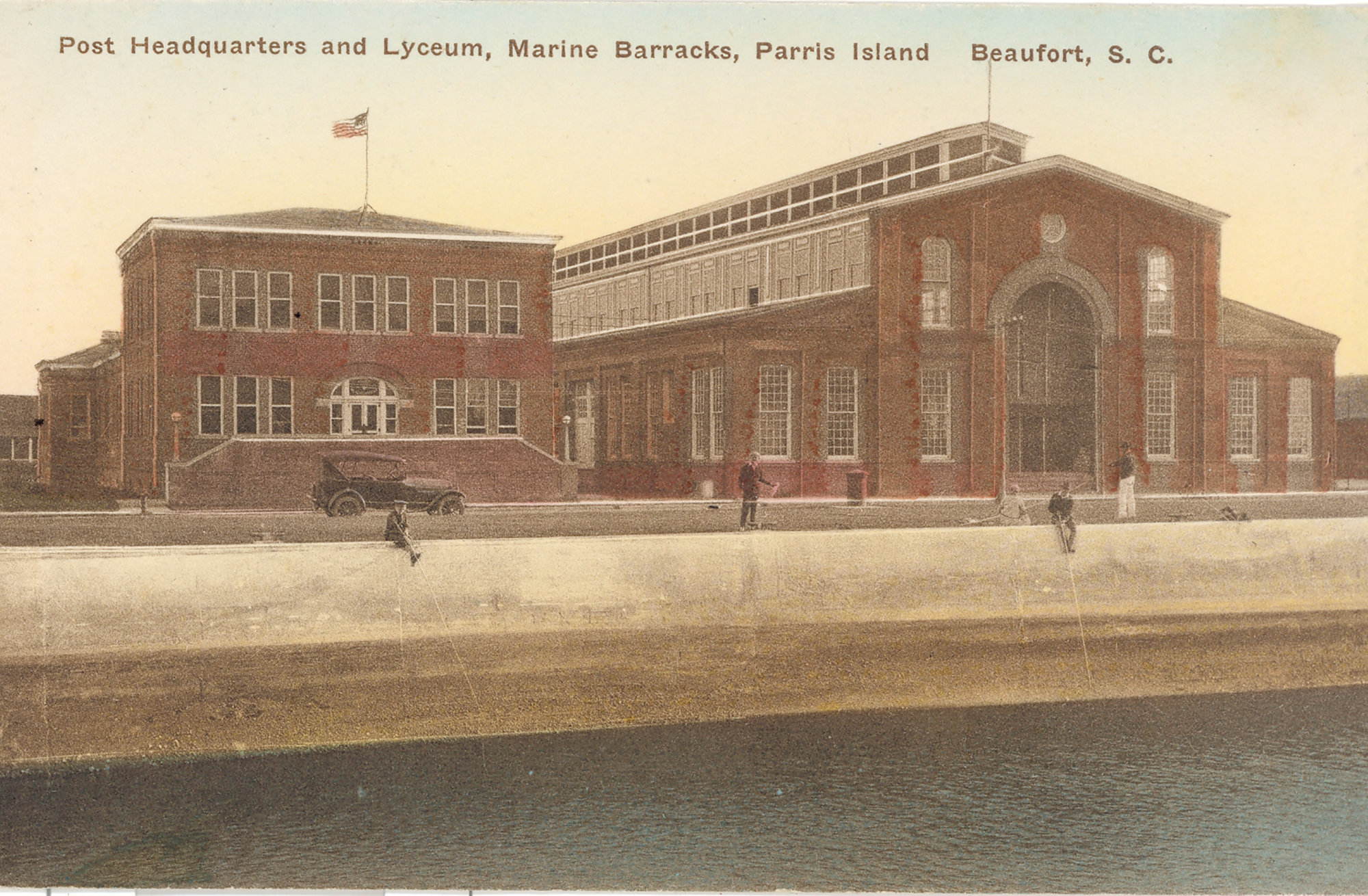This month in S.C. History: 1st Marine Guards are posted at Port Royal on June 26, 1891
Seen is a postcard depicting the post headquarters and lyceum at Parris Island in Beaufort.
FROM THE S.C. HISTORICAL SOCIETY
Parris Island, in Port Royal Harbor, served as a Navy base for the Union throughout the Civil War. In 1882, Congress established a naval storehouse and coaling dock on the island. Then, on June 26, 1891, a marine guard was sent to protect the area during construction, and it was officially dedicated as the Port Royal Naval Station. This was the first Marine post on the island and consisted of one sergeant, two corporals and 10 privates.
The men did not have barracks for almost two years, but one was finally constructed in early 1893. In 1896, the base was officially titled Marine Barracks, U.S. Naval Station, Port Royal, South Carolina. In 1909, the base transitioned into a Marine Officers' School, and in June 1911, a recruit depot was established there. The base expanded greatly during World War I and was renamed "Marine Barracks, Paris Island" (with just one "r") in 1917. The U.S. government took possession of any remaining land on the island, and in 1919, a Marine Corps Order corrected the spelling and changed the name from "Paris" to "Parris."
Parris Island grew in the years between the two World Wars and included training for recruits, seagoing activities, field music and aviation. In 1939, the barracks and training facilities were enlarged and updated. More than 240,000 recruits trained at Parris Island during World War II, including Women Marine Reservists. In 1948, the Women's Armed Services Integration Act allowed the military to recruit "Women Marine" regulars. They began arriving at Parris Island the next year. The base was, and still is, the only recruit depot to train women. Black recruits, who formerly trained at a separate facility, were also incorporated into the program at Parris Island in 1949.
Between the summer of 1950 and 1953, more than 138,000 marines trained at the base. Most of these served in the Korean War. In the 1950s, many of the older buildings were torn down and modernized. The base was the subject of a great deal of attention in 1956, when a training accident caused the deaths of six recruits. Known as the Ribbon Creek Incident, the tragedy was investigated and led to several changes in the training process.
Another wave of recruits inhabited the island during the Vietnam War, and training was cut from 12 to 10 weeks to accommodate the large number. In 1996, the Marines altered the training program again and incorporated a values-based program with the Crucible, a 54-hour event, at the end. The base is open to visitors who can experience the history and significance of the island.
More Articles to Read




